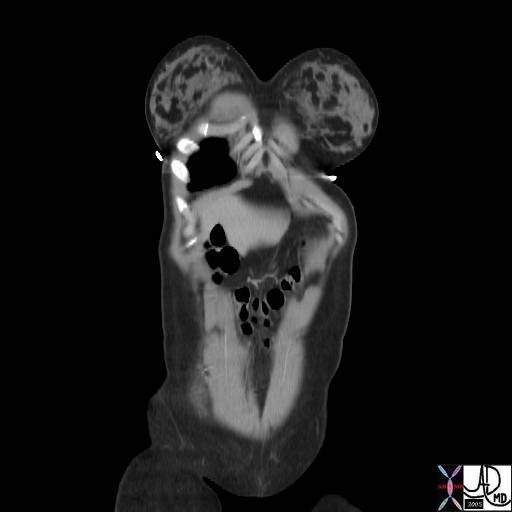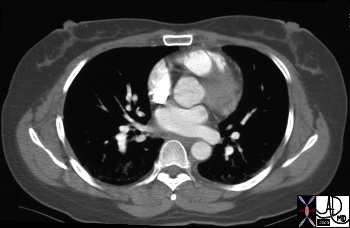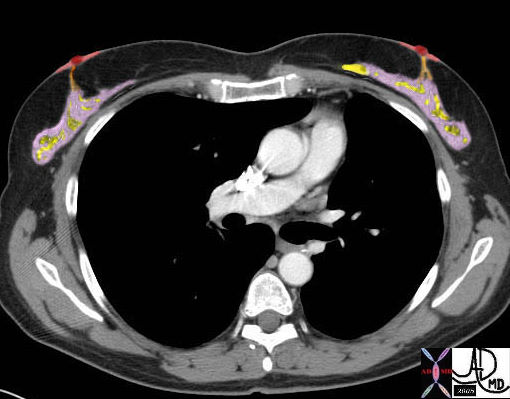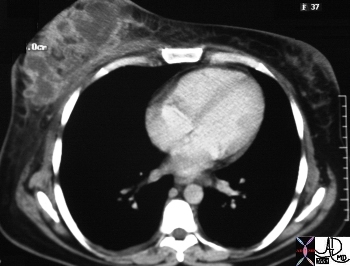The breast is found as a paired organ on the anterior chest wall, anterior to the pectoralis muscle and the serratus anterior muscle.
This coronally reformatted image of the anterior aspect of the chest of a 24 year old female shows the breasts resting on the anterior chest wall, anterior to the barely visible pectoralis muscles. Courtesy Ashley Davidoff MD 42682
This coronally
The breast overlies the second to sixth or seventh rib, lying within the hypodermis and superficial to the anterior fascia of the pectoralis major muscle.
Landmarks of its medial and lateral borders correspond to the lateral sternal border and laterally to the anterior axillary fold.
The breasts develop along the lateral-line, primitive milk streak or “galactic band”. As previously noted this line runs from the axilla through the nipples arcing slightly anteriorly and then coursing back to the inguinal regions.
In the human, the breasts seem to have been positioned under the watchful eye of the nursing mother whereas in animals it seems like they have been positioned for protection from injury. In the cow, elephant, horse, goat and deer they are in the inguinal region and in the whale the breasts are on either side of the anus. The monkey and bat have breasts that are positioned anteriorly and laterally ? similar to positioning in the human.
The glandular tissue as stated above is radially oriented around the nipple with a preponderance of parenchyma in the upper outer quadrant in the tail of Spence.
The glandular tissue is normally separated from the pectoralis muscles of the anterior chest wall by a fat plane and from the skin by adipose tissue as seen in the next image. This is called the retromammary layer of fat.
Inverted “V” shaped tissue
A cross section through the female chest at the level of the nipples reveals an inverted v-shaped tissue which represents the mammary apparatus ? a combination of glandular tissue, ducts, and stroma.. Note that the glandular tissue has fat both anteriorly and posteriorly to it. The detail of these layers is expanded in the ?parts? section. Courtesy Ashley Davidoff MD 25483
|
Loss of the Fat Space |
Note in this case of inflammatory carcinoma of the right breast, the fat plane between the glandular tissue and the anterior chest muscle has been lost as the process has invaded that space. Courtesy Ashley Davidoff MD 20042
Applied Anatomy
In a patient with breast carcinoma the involvement of the skin or chest wall upstages a localized breast mass to stage IIIB which has important therapeutic implications.




